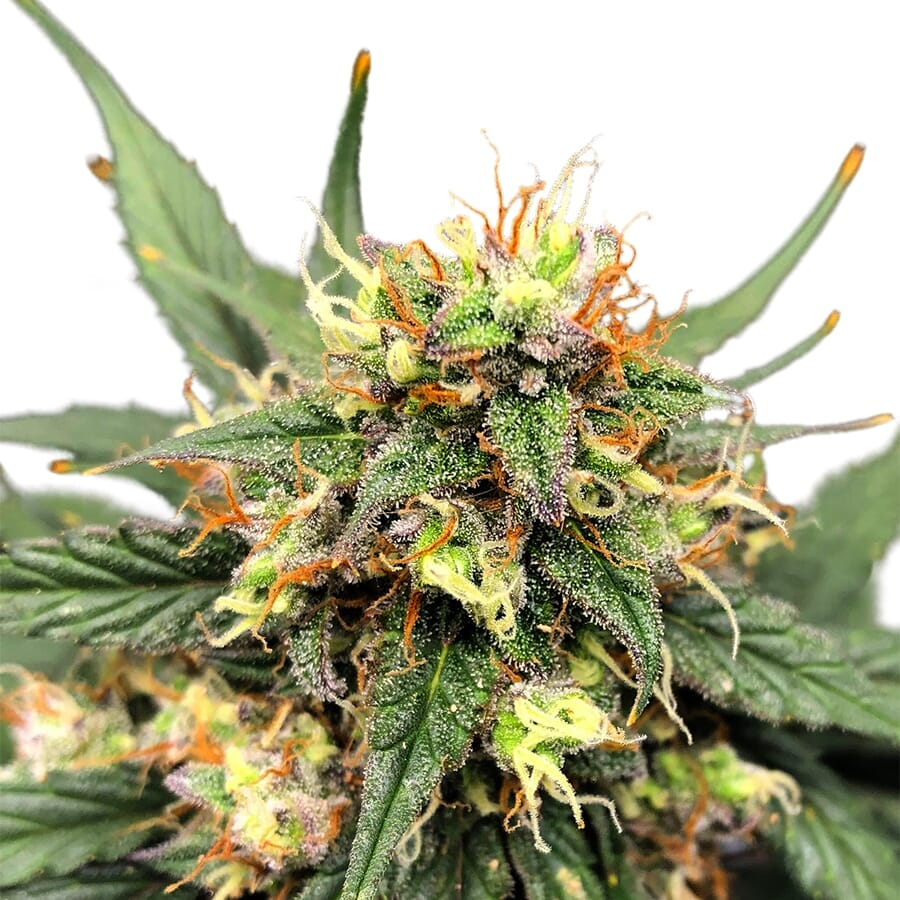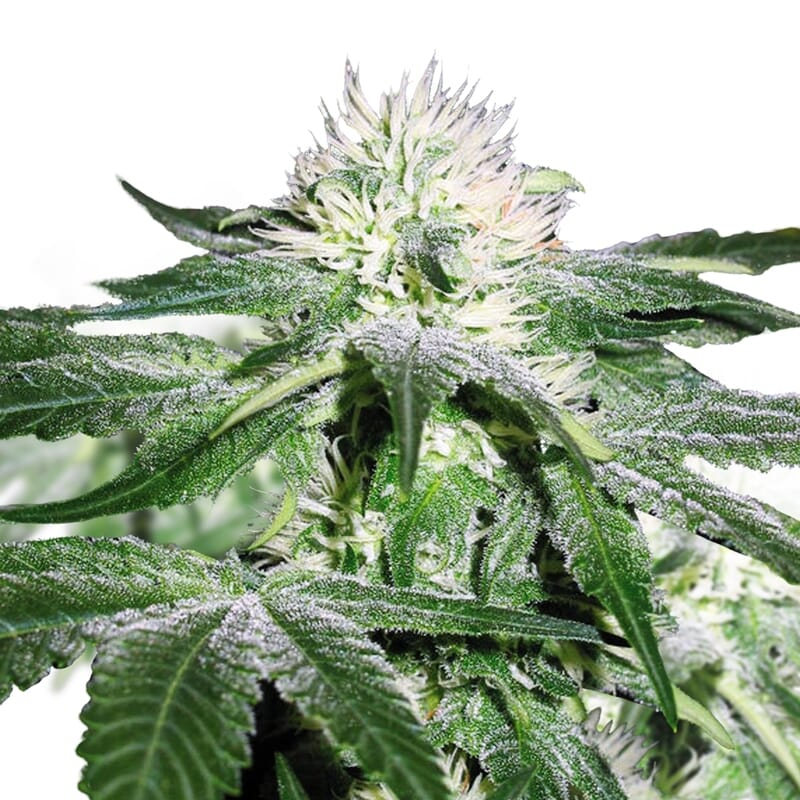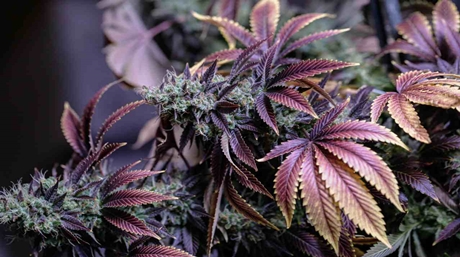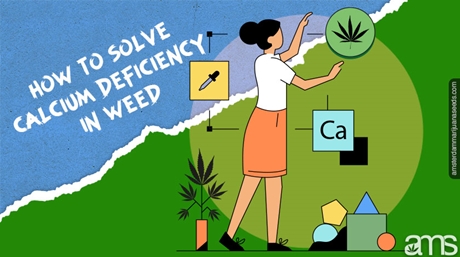Table of Contents
- What Is Magnesium?
- Importance Of Magnesium In Weed Plants
- What Are The Various Sources Of Magnesium For Your Plants?
- What Are The Magnesium Needs During The Various Stages Of Development?
- How To Recognize Magnesium Deficiency In Weed
- Factors That Contribute To Magnesium Deficiency
- How To Solve Magnesium Deficiency In Weed
- Conclusion
Magnesium (Mg) is a vital nutrient with lots of benefits for your weed needs. Though its importance comes secondary after the macronutrients (potassium, phosphorus, and nitrogen), magnesium promotes healthy growth and gives you the desired yields.
Your crop does not require the element in large amounts, but any shortages or excess will make your plant unhealthy or, in adverse situations, death.
The basic knowledge of magnesium deficiency, deficiency, toxicity, requirements, and fixing these deficiencies is crucial. As a grower, you need to get all the tips on the sources of your plant nutrients, specifically magnesium. That will eliminate guesswork throughout your growing period. This guide is the help at hand!
What Is Magnesium?
Magnesium is a secondary macronutrient that is required by plants sparingly. Technically, when the metallic chemical element gets into wet soil, it dissolves for the plants’ roots to absorb. Thus, it becomes the power behind photosynthesis, among other processes in plant growth.
The unique elements stay in the plant enzymes, but it is mobile. This means magnesium can move to other cells in cases of shortages. The shortage reveals itself by chlorosis. Here, the chlorophyll carries to other parts of the plant in a bid to distribute itself. That causes yellowing of the leaves.
Sometimes, if there are shortages, the new growths lack enough magnesium. The symptoms will begin to show on the new shoots. If you do not attend to them, you may lose the crop or get low yields. Let’s now go into the functions of the essential element in your cannabis crop.
Importance Of Magnesium In Weed Plants
Cultivating marijuana requires that you get conversant with the nutritional guidelines for the plant. This includes a knowledge of the functions of each one of the essential elements. That includes magnesium.
As we mentioned earlier, our cannabis plants require somewhat fewer secondary nutrients than primary ones but also in larger quantities than other secondary nutrients.
Therefore, you have to follow the magnesium dosage to get stunning results. Here are some of the roles magnesium performs in your weed plants;
Photosynthesis
The process by which green plants convert light into energy to become a useable element in plants is known as photosynthesis. Your weed is a green plant, meaning it undergoes photosynthesis.
For this process to occur, there has to be a green mater (chlorophyll). Magnesium gives the leaves chlorophyll and stays in the enzymes. The enzymes are the core of the chlorophyll molecule. Without magnesium in the enzymes, photosynthesis will not happen. Therefore, a plant without photosynthesis is a dead matter.
Metabolism
Metabolism involves a variety of chemical procedures in plants and other living things. For these processes to happen, the organism requires enzymes. We have already established that magnesium stays in the enzymes to enhance their roles in the various procedure.
If there is no presence of magnesium in your weed, the enzymes will be inactive. That means the metabolism will not take place. Some metabolic processes include breaking down carbohydrates, stabilizing cell membranes, constructing cells, building plant tissues, and many others.
Phosphorus Carrier
Magnesium is in charge of carrying phosphorus to various plant tissues. Phosphorus is an essential element that plays different roles like photosynthesis, transfer of energy, and movement of nutrients in the plant. Magnesium is also in charge of transforming sugars and starches and genetic transfers from one generation to another. Without magnesium, these metabolic processes will not take place.
Iron Utilization
Magnesium facilitates the plant to utilize iron maximally. Iron in plants is crucial for photosynthesis, DNA composition, and respiration, among others.
Oil And Fat Formation
Like animals, plants require oil and fat in their tissues. However, the two perform different functions like energy storage, among others. Magnesium helps your plants to form fats in the various tissues. Lack of the element means that the plant will lack energy.
What Are The Various Sources Of Magnesium For Your Plants?
Magnesium is plenty in the soil. It is also found in a variety of other minerals. The element becomes available for your plants when the minerals break down. Although many soils have magnesium, you may find your region with the deficiency. The soil may also be too acidic to facilitate magnesium intake. Whichever the case, you need to know how to source in the case of shortages.
There are two sources of this crucial element name;
1. Special Fertilizers Embedded With Magnesium
These are fertilizers that have a combination of magnesium sulfate and potassium sulfate. They have a composition of 11% magnesium with 22 percent sulfur. Growers use the fertilizer as a starter fertilizer for weed. It enriches the soil with magnesium and balances its pH.
2. Irrigation Water
Irrigation water has substantial levels of magnesium. The supplier will avail a table showing the amounts of magnesium your soil gets when you use the water. You have to be cautious with irrigation water as it can exceed the recommended amounts of magnesium and lead to toxicity.
A simple soil test is essential to establish the levels often. The test guides you on when to increase your magnesium levels or decrease them. Irrigation water may not be available in your areas. If not, you can get special fertilizers with magnesium concentrates.
What Are The Magnesium Needs During The Various Stages Of Development?
Each stage of the weed plant needs a different amount of magnesium. Therefore, you need to understand the various stages of your marijuana plants and their mineral needs, as explained in the section below:
Germination And Seedling Stage
During germination, crops do not require magnesium; however, it’s essential to have the soil ready for the rest of the stages after germination. The cotyledon has enough nourishment for the embryo until the seedling wholly sprouts. If you use clones, they will utilize the supplied nutrients in the soil or the medium.
During the seedling stage, your crop’s roots are not well developed. That means the absorption of nutrients is low. However, your marijuana plants are still utilizing the cotyledon’s provisions. You will, therefore, allow your babies to use what is in the medium as you wait for them to begin vegetating.
Early Vegetative Stage
This stage kicks in immediately after the germination when extra leaves begin shooting. For early bloomers like autoflowers, this phase starts at one week. Other strains begin vegetating actively at age two or three weeks. Whichever the case, photosynthesis has already begun and will take place until maturity.
We learned earlier that for photosynthesis to happen, it requires the green matter you see on your marijuana plants. The green matter (chlorophyll) forms with the help of magnesium. Other processes like metabolism are also active.
When your plants are 15 cm tall, introduce a 25% dosage but be keen to supply your crop with sufficient magnesium and according to the guidelines. That will guarantee you a healthy crop.
Late Vegetative Stage
At this stage, your plants are thriving well and have an expanded their root system. They are at the peak of development and require more nutrients. Processes like photosynthesis and metabolism are also at the peak meaning higher doses of magnesium to facilitate the operations.
Most growers go wrong at this stage by over-fertilizing their gardens. Follow the feeding schedule and guidelines to the latter to avoid inappropriate concentrations.
Pre-Flowering Stage
This stage is also the budding stage for your weed. For some strains like the autoflowers, it begins early at week three or four. The other strains may delay a little. You have to be keen and observant to spot the onset of budding. For your buds to flourish, they need extra nourishment.
Magnesium and calcium will come in handy at extra levels. Other nutrients like nitrogen are also essential at this stage. Magnesium is crucial for turning light into energy (photosynthesis), which is the core of budding. If you miss out on the nutrients at this not stage of development, your yields will be low. Poorly developed and fewer buds give forth tiny flowers and less yield.
Early Flowering And Maturity Stage
As the flowers bloom, they require proper nutrients, including magnesium. If the rest of the plant is healthy, that will keep the flowers vibrant. Continue feeding your buddies with the correct levels of magnesium until maturity.
When the flowers are fully developed, and the buds are also complete, it’s time to get your rewards. You do not require any more nutrients, including magnesium. Flush them all to the drain to prevent the weed profiles from tasting harsh.
Changing your irrigation water, which has many nutrients, and flooding the whole garden with nutrients free water. After a few days, your plants will turn yellow, meaning all the nutrients are gone. Enjoy reaping your weed.
How To Recognize Magnesium Deficiency In Weed
As a grower, you need the art of spotting magnesium deficiency in weed. The lack develops quickly in weed plants and exhibits several symptoms, including;
Chlorosis
When your weed leaves turn yellow, that means they have chlorosis. The leaves’ veins remain green while the leaf gains a marble appearance. Also, the margins of the leaves have a characteristic of purple or red color
Stunted Growth
Like many nutrients, magnesium deficiency exhibits itself by stunted growth. When your weed is not gaining the correct height or breadth, there is something wrong, and that is malnutrition. Testing your soil medium for nutrition components will let you know what element to add or decrease.
Necrosis
Plant cells die if there is a severe deficiency of nutrients. For example, lack of magnesium leads to necrosis. The noteworthy point is that if your plants get necrosis, you have lost the crop. Most of the time, the situation is irredeemable.
You may try foliar and other additions, but these may not revive your plants. That means you will have to begin all over again. Before you get to marijuana cultivation, prepare your soil in advance by ensuring that it has all the nutrients, including magnesium.
Small Deformed Buds
When magnesium deficiencies occur during the vegetative stage, that affects the budding process. Later, the buds develop slowly. The result is unhealthy and deformed buds. This harms the flowering and the yields at large. To correct this, drench your crop with magnesium concentrates heavily to have your buds weighing more.
Magnesium deficiency symptoms are similar to those of other deficiencies like calcium, potassium, and others. Most probably, your crop is showing the above signs because of complex shortages.
A nutrition test will reveal whether it is all the nutrients that your weed is not accessing or it is only magnesium. That will give you a leeway to go on with the right supplements. Also, you could be adding in the supplements that your buddies are not sucking in. Many factors may lead to deficiencies. Before we get to how you can solve the magnesium deficiency, let’s get into these factors.
Factors That Contribute To Magnesium Deficiency
Although there could be other reasons, the following are some of the main factors that contribute to magnesium deficiency in weed plants:
1. Acidic Medium
Acidity is low pH. Weed thrives in pH levels of 6.0 – 6.5. However hard you try to supplement your crop with magnesium, if the pH is lower than 6.0, your plants will not absorb it and also the other nutrients. Before cultivating marijuana, test your medium for pH levels. If it is lower, add limestone to alkalize.
For higher pH than 7.0, add aluminum sulfate. These will bring the pH to a perfect level. Test your water, too, as it could be a factor in lowering the pH. Many growers conduct a weekly test to be on the safe side.
2. Lack Of Magnesium In The Medium
Have you tested if you have magnesium in your soil, coco coir, or hydroponics? It could be that the fertilizer that you applied does not contain magnesium. Some fertilizers do not have the element. It is prudent to read the label before the application process to know if the fertilizer has magnesium.
3. Lack Of Magnesium In Irrigation Water
The running water at the tap water may be lacking magnesium, especially if your state’s utility company demineralizes. Many growers go wrong as they assume that the water they are using for quenching their plant’s thirst got all the minerals.
The only way to determine is to take a sample test. This test will give you a list of minerals available in your tap water. If the water lacks magnesium, that means you have to provide your weed crop with the required levels. Checking your tap water or irrigation water for magnesium is one of the preparations before cultivating marijuana.
4. Overwatering
Your cannabis plants cannot thrive in a swampy environment. They do not have the natural mechanism that plants like papyrus and hyacinth have to cope with soggy soils. You create a swampy condition by overwatering. From the seedling stage to flowering, you do not require lots of water.
Besides root rot, your weed plants will not suck in magnesium, among other nutrients. So give your plants enough water to quench their thirst but not too much to draw out the nutrients or prevent the roots from absorbing the same.
How To Solve Magnesium Deficiency In Weed
Novices misinterpret magnesium deficiency symptoms of other deficiencies. The first step to ensure that you are solving the problem is to establish the root cause. As a cannabis farmer, do not spot the deficiency symptoms and assume that the soil is lacking magnesium.
The factors we pointed out, including pH, cannot be solved by adding more nutrients. Your cannabis buddies will not suck in magnesium and other nutrients if the environment is acidic. After you establish the cause, you can go ahead and solve the deficiencies.
Here is how to go about solving magnesium deficiency;
1. Add Magnesium Supplement
If the deficiency is because your substrate lacks magnesium, go ahead and add the supplements.Magnesium sulfate added in the 50 to 75 ppm target range is a perfect quantity. The combination also contains nitrogen for your crop.
In extreme deficiencies, a heavy magnesium dosage by drenching will be sufficient. You can dose that at 2 lbs of magnesium per 100 gallons of water.
2. Flushing And Adding Supplements
This treatment option requires you to flush the soil with water (6.0 pH levels). It leaves the soil at 6.0 to 6.5, hydroponics 5.5 to 6.0 and coco coir at 6.0 levels. After flushing, add a high-quality magnesium supplement specific to marijuana. Maintain the same levels until maturity. After the early flowering, you will not require magnesium or any other supplements. Stop the feeds at maturity and flood the soil with water to drain all the nutrients from your buds.
3.Solve The pH Issues
We have found out that acidity in the growing medium blocks nutrients intake. If you recognize that your plants are not sucking in the required magnesium due to pH, solve the problem immediately.
Add limestone powder into the grow medium. That should neutralize the medium with instant results. If the substrate is too alkaline for your cannabis plants to absorb nutrients, you can add aluminum sulfate to bring it to the right level.
Check the causes of the low or high pH. It could be the water you are using. If the water is acidic, it transfers the same to the substrate. Perhaps your choices are limited to your tap water. Go ahead and neutralize it by adding the exact solution to the reservoir. We recommend that you be keen on pH as it is one of the notorious causes of magnesium deficiency in weed.
4. Avoid Overwatering
Your cannabis plants would do excellent if you provided the appropriate amount of water without exceeding. The water requirements depend on the stages of growth. The vegetative phase requires a fair amount to facilitate the leafy phase, closely followed by the flowering and seedling stages.
When your buddies attain the maturity stage and are ready for harvest, you will flood your garden with water. The process also called flushing, drains all the nutrients in preparation for harvesting.
Conclusion
Magnesium deficiency indicates a bottom to top nutrition imbalance in your weed crop. A keen grower will first notice the unhealthy look on the lower growth as the nutrients move to the newest shoots.
The bottom shoots will be yellow while the tips become purple/red and begin to dry out. The critical role of magnesium in photosynthesis will stop. Other processes like protein synthesis and enzyme secretion will also halt. The value of your crop will decrease as fertility goes down.
These are not your desires. Learn and master early detection of nutrients deficiency and solve the problem accordingly. Preventing the deficiencies is the way to go so that you can maximize production and yields. You will find weed cultivation easy and enjoyable.















